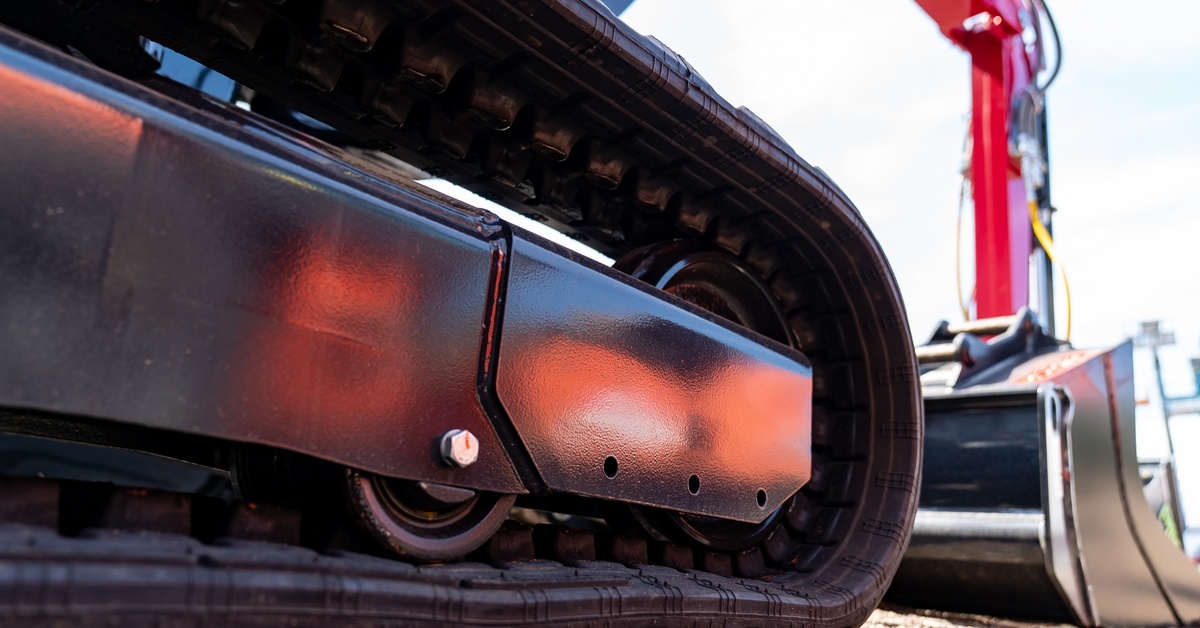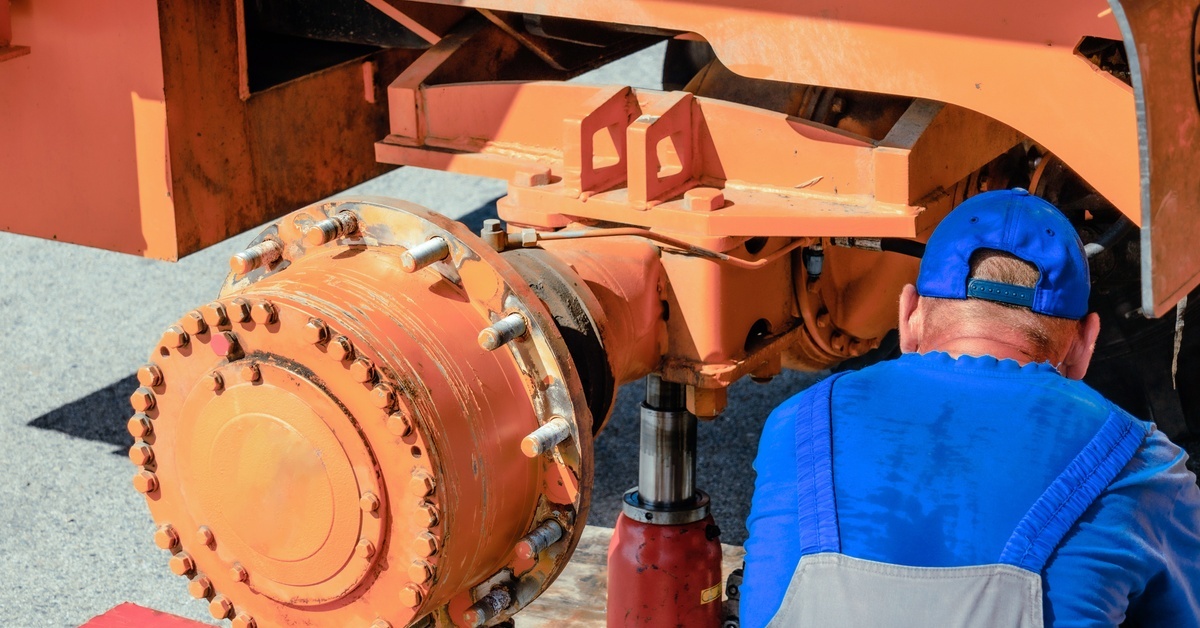8 Signs Your Undercarriage Needs Replacing
Sep 10th 2025
Sep 10th 2025
Maintaining heavy equipment is pivotal to keeping operations running smoothly, and the undercarriage is one of the most important components. The undercarriage withstands tremendous stress from constant operation.
Regular inspections and proactive replacements are essential to avoid downtime. This guide highlights eight signs your undercarriage needs replacing, so you can address issues early and keep your heavy machinery in top shape.
One of the most apparent indicators of an undercarriage problem is worn-out tracks. Over time, continuous use on rugged terrains can cause the tracks to lose their integrity. Cracks, uneven tread wear, and frayed edges are signs that the tracks are no longer performing optimally.
If your machine is experiencing reduced traction or struggles to maintain its balance, these are clear warnings that your tracks need attention. Left unchecked, wearing tracks can lead to extreme equipment performance issues.
Track wear commonly occurs due to repeated operation on harsh surfaces, such as rocky, uneven, or abrasive terrains. Environments with lots of debris, sharp objects, or excessive moisture can accelerate the degradation of tracks.
For example, working in construction sites or quarries often exacerbates wear compared to operations on soft clay or grass. Consistently turning or braking too sharply can also increase strain on the tracks, leading to faster erosion of treads over time.
To prevent such complications, regular track inspections are crucial. Start by cleaning the tracks to remove dirt, debris, and moisture that may obscure wear patterns. Pay close attention to cracks, missing pieces, and thinning treads.
Use a gauge or calipers to measure the depth of your treads and ensure they meet the manufacturer’s wear standards. Observing any unevenness or exposed metal indicates a pressing need for a replacement.
Removing worn tracks is not only about restoring functionality but also about avoiding damage to adjacent components. New, high-quality, heavy equipment undercarriage parts are necessary to provide durable, long-lasting results.

Uneven wear on the undercarriage is another important sign to look out for. This can occur when the weight of your machine is not evenly distributed or if your equipment spends a significant amount of time on uneven terrain.
Wear patterns that are more pronounced on one side of the tracks or rollers suggest potential misalignments, which place undue stress on specific areas of the undercarriage.
Ignoring this issue can compromise the balance of your machine, lead to accelerated deterioration, and reduce operational efficiency. If you notice uneven wear, it’s best to consult with a professional or replace the undercarriage parts to prevent further damage.
Rollers are vital for ensuring smooth movement of the tracks and maintaining appropriate tension in the undercarriage. They loosen or wear out entirely. When rollers do not rotate freely or show signs of flattening, they compromise the undercarriage’s performance and put added strain on the tracks.
Another thing to inspect is whether the seals on rollers are leaking. Leaking seals allow dirt, water, and debris to penetrate the components, thereby accelerating wear and reducing overall longevity. Replacing failing rollers promptly will help prevent unnecessary strain on your system.
The undercarriage’s sprockets play a pivotal role in transferring power from the engine to the tracks. These components endure immense pressure as they facilitate seamless rotation and movement of the tracks. But excessive use can cause sprockets to wear down over time.
Signs of sprocket wear include rounded teeth, inconsistent track alignment, and noisy operation. Damaged sprockets not only affect movement but can also damage the tracks themselves. If you spot these signs, it’s important to replace the sprockets to maintain safe and efficient operations.
The undercarriage’s design makes it capable of withstanding extreme operational stress. However, accidents, heavy impacts, and prolonged use can cause parts to bend or crack. Inspect critical components, including the track frame, links, and guards, for visible signs of structural damage.
Cracks or bends compromise the overall integrity of your machine and can quickly lead to chain breaks or misalignment issues. Even minor flaws in the structure could jeopardize the safety of your equipment and everyone on the job site. If you spot such problems during inspections, it may be time for a complete replacement of the compromised undercarriage components.
Heavy equipment generates some level of noise and vibration during operation, but excessive vibrations or unusual noises are a major red flag. When moving parts within the undercarriage begin to weaken or fail, you’ll notice an increase in operational noise or imbalance in the machine.
Excessive vibrations could stem from deteriorating rollers, unevenly worn tracks, or structural damage. These issues not only reduce operational comfort but can also lead to more severe internal damage over time. Swiftly addressing unusual noises or vibrations will save you from extensive and costly repairs down the line.

Proper track tension guarantees smooth operation and even wear across the undercarriage. If the tracks frequently become loose or lose tension despite manual adjustments, it suggests a more severe issue within the system.
Track tension problems are often linked to worn-out tensioners, springs, or misaligned components. A poorly tensioned track can slip, leading to loss of traction and uneven movement. If repeated adjustments fail to resolve the problem, replacing the undercarriage may be the most effective solution.
Finally, declining operational efficiency is a comprehensive indicator that something is amiss with your undercarriage. If you find that your equipment is struggling to achieve the productivity levels it once did, it could be due to cumulative undercarriage wear. This subtle symptom often appears alongside more visible signs such as track wear or component damage.
Failing to replace a worn-out undercarriage not only affects the performance of your equipment but can also drive up fuel, maintenance, and repair costs. A well-maintained undercarriage will ensure that your machine delivers optimal performance and reliability for years to come.
Routine inspections are the foundation of a well-maintained undercarriage. By identifying eight signs your undercarriage needs a replacement, you can take proactive steps to prevent costly breakdowns and unexpected downtime. From worn tracks and sprockets to loosened rollers and structural damage, staying vigilant will allow you to address issues early and maintain smooth operations.
To ensure the best results, always invest in reliable undercarriage solutions provided by reputable suppliers. Companies like Tractor Zone offer a wide selection of replacement parts designed to uphold the highest standards of performance and durability.
Trusting specialized suppliers for your heavy machinery needs can make all the difference in the longevity and productivity of your equipment. Remember, the undercarriage forms the backbone of your heavy equipment, and caring for it as a priority will translate into better efficiency and cost-effectiveness in the long run.